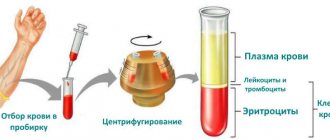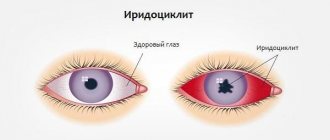Obesity in children is a condition in which the child’s actual body weight exceeds the age standard by 15% or more, and the body mass index is ≥30. Research data show that about 12% of Russian children are overweight, and 8.5% of children living in cities and 5.5% in rural areas are obese. All over the world, there is an epidemic increase in the spread of obesity among children, which requires a serious attitude to this problem on the part of pediatrics and pediatric endocrinology. Almost 60% of obese adults began having weight problems during childhood and adolescence. The progression of obesity in children leads to the future development of cardiovascular, endocrine, metabolic, reproductive disorders, diseases of the digestive tract and musculoskeletal system.
Causes of obesity in children
Obesity in children has a polyetiological nature; a complex interaction of genetic and environmental factors plays a role in its implementation. In all cases, the basis of childhood obesity is an energy imbalance caused by increased energy consumption and decreased energy expenditure.
It is known that if both parents are obese, the probability of a similar disorder occurring in the child is 80%; if only the mother is obese – 50%; only for the father - 38%.
The risk group for the development of obesity includes children with increased birth weight (more than 4 kg) and excessive monthly weight gain who are bottle-fed. In infants, obesity can develop due to overfeeding the child with high-calorie formulas and violation of the rules for introducing complementary foods.
As anamnestic data show, the development of obesity in most children is associated with a violation of the diet and a decrease in the level of physical activity. Typically, the diet of overweight and obese children is dominated by easily digestible carbohydrates (baked goods, sweet desserts) and solid fats (fast food), sweet drinks (juices, soda, teas) with insufficient consumption of fiber, protein, and water. At the same time, most children lead a sedentary lifestyle (they do not play outdoor games, do not play sports, do not attend physical education classes), spend a lot of time watching TV or the computer, and experience intense mental stress, which contributes to physical inactivity.
Obesity in children can be a consequence not only of constitutional predisposition and nutritional reasons, but also of serious pathological conditions. Thus, obesity is often found in children with genetic syndromes (Down, Prader-Wilii, Lawrence-Moon-Biedl, Cohen), endocrinopathies (congenital hypothyroidism, Itsenko-Cushing syndrome, adipose-genital dystrophy), central nervous system damage (due to head injury, meningitis, encephalitis, neurosurgical operations, brain tumors, etc.).
Sometimes children’s medical histories show a connection between obesity and external emotional factors: entering school, an accident, the death of relatives, etc.
Complex treatment
What to do if your child is obese? There are many effective ways to fix the problem. All therapeutic methods must be used comprehensively under the strict supervision of a pediatrician.
With the right approach, excess weight can be removed with conservative treatment. It includes:
- taking medications;
- physical activity and massage;
- following a special diet;
- psychological help.
Diet
Diet is an integral part of the fight against childhood obesity. A nutritionist is responsible for correcting the child’s nutrition. Its main goal is to stop the growth of fat deposits and achieve the removal of already formed ones. This method of losing weight is contraindicated for children under three years of age.
The child's diet during treatment should be varied and balanced. Dishes are consumed in small portions 6–7 times a day. It is advisable that the break between meals should not be more than 3 hours.
Usually, for obesity, table No. 8, developed by the famous Soviet nutritionist M. Pevzner, is recommended. This diet consists of the following products for the daily diet:
- bread with bran – 100-160 g;
- low-fat fermented milk products (cottage cheese, kefir) – 200–250 g;
- lean meats and fish – 170–200 g;
- vegetable soups with a small addition of potatoes – 220 g;
- water porridge from barley, buckwheat and millet – 220 g;
- fresh vegetables and fruits are not limited in consumption;
- tea, freshly squeezed juices, compote.
This diet provides several daily menu plans. The offered dishes fully provide the body with the necessary substances. See the table for one of the daily menu options:
| Eating | Time | Menu option for the day |
| 1 breakfast | 8:00 |
|
| 2 breakfast | 11:00 |
|
| Dinner | 13:00 |
|
| Afternoon snack | 16:00 |
|
| Dinner | 19:00 |
|
| Before bedtime | 21:00 |
|
To prevent the child from feeling hungry, it is allowed to give fruits and fresh vegetables between meals. What foods should be removed from your daily diet:
- semi-finished products;
- carbonated drinks;
- fried, fatty, spicy foods;
- cocoa, coffee;
- bakery, wheat products (pasta is allowed to be consumed once a week);
- spices;
- grapes, bananas;
- semolina;
- sweets;
- potato.
Physical activity and massage
Treatment of the disease must necessarily include daily physical activity. It is recommended that young children go for walks more often; it is advisable to replace stroller walks with walking ones. Try to play outdoor games with your kids, if possible, provide them with various sports attributes (wall bars, roller skates, bicycles, scooters, etc.)
At the age of 4–5 years, you can already attend sports clubs and a swimming pool. Light physical activity (running, skating, gymnastics, volleyball, wrestling, etc.) helps strengthen the body's protective functions and has a beneficial effect on the process of losing weight.
Additionally, consult with a qualified trainer to prescribe a course of exercise therapy. The specialist will draw up an individual training plan, taking into account the general state of health and the degree of pathology.
Massage is an equally effective way to combat obesity, but it is contraindicated for children with heart disease. The procedure must be performed by a doctor. Positive effects of massage:
- reduction of fatty tissue;
- restoration of metabolism;
- stimulation of blood circulation;
- normalization of muscle tone;
- improving the functioning of the musculoskeletal system.
Surgical methods
Surgery in the treatment of childhood obesity is performed only in extreme cases - when other methods of therapy have proven ineffective or the pathological condition poses a real threat to life.
Surgical methods are improved every year. Currently, there are a large number of different types of operations (about 40), which help eliminate pathology and correct appearance.
Classification of obesity in children
Thus, taking into account the causes of occurrence, two forms of obesity in children are distinguished: primary and secondary. In turn, primary obesity in children is divided into exogenous-constitutional (associated with hereditary predisposition) and nutritional (associated with dietary errors). With constitutional obesity, children inherit not the excess weight itself, but the peculiarities of metabolic processes in the body. Nutritional obesity most often occurs in children during critical periods of development: early childhood (up to 3 years), preschool age (5-7 years) and puberty (from 12 to 16 years).
Secondary obesity in children is a consequence of various congenital and acquired diseases. The most common type of secondary obesity is endocrine obesity, which accompanies diseases of the ovaries in girls, thyroid gland, and adrenal glands in children.
The criteria for determining obesity in children are still the subject of debate. Gaivoronskaya A.A. Based on the child’s body weight exceeding normal values for a given age and growth, he distinguishes 4 degrees of obesity in children:
- Obesity I degree – the child’s body weight exceeds the norm by 15-24%
- Obesity II degree – the child’s body weight exceeds the norm by 25–49%
- Obesity III degree - the child’s body weight exceeds the norm by 50–99%
- Obesity IV degree - body weight exceeds the permissible age norm by more than 100%.
Primary obesity of I–II degree is detected in 80% of children.
Identification of predisposing factors to obesity in children and adolescents
Diagnosis is based on a conversation with children who are prone to obesity and their parents. A meeting with a doctor should alert the family and make adjustments to lifestyle, nutrition, understanding of the essence of the disease and its treatment.
Additionally, to diagnose obesity, the doctor prescribes:
- biochemical blood test - which reveals a possible increase in blood glucose levels, the value of cholesterol, triglycerides, protein and its fractions. ALT and AST indicators are important, with the help of which the activity of the liver, heart and other organs is assessed;
- tests for the content of hormones - thyroid gland, adrenal glands;
- X-ray examination, computed tomography, magnetic resonance imaging, ultrasound are methods that make it possible to detect painful processes in almost the entire child’s body. The need to prescribe them is decided by the doctor individually.
Symptoms of obesity in children
The main sign of obesity in children is an increase in the layer of subcutaneous fat. In young children, signs of primary obesity may include inactivity, delayed development of motor skills, a tendency to constipation, allergic reactions, and infectious diseases.
With nutritional obesity, children have excess fat deposits in the abdomen, pelvis, hips, chest, back, face, and upper extremities. At school age, such children experience shortness of breath, decreased tolerance to physical activity, and increased blood pressure. By puberty, a quarter of children are diagnosed with metabolic syndrome, characterized by obesity, hypertension, insulin resistance and dyslipidemia. Against the background of obesity, children often develop uric acid metabolism disorders and dysmetabolic nephropathy.
Secondary obesity in children occurs against the background of a leading disease and is combined with typical symptoms of the latter. Thus, with congenital hypothyroidism, children begin to hold their head up, sit and walk late; their teething dates are delayed. Acquired hypothyroidism often develops during puberty due to iodine deficiency. In this case, in addition to obesity, children experience fatigue, weakness, drowsiness, decreased performance at school, dry skin, and menstrual irregularities in girls.
Characteristic signs of Cushingoid obesity (with Itsenko-Cushing syndrome in children) are fat deposits in the abdomen, face and neck; while the limbs remain thin. In girls during puberty, amenorrhea and hirsutism are observed.
The combination of obesity in children with enlarged mammary glands (gynecomastia), galactorrhea, headaches, and dysmenorrhea in girls may indicate the presence of prolactinoma.
If, in addition to excess weight, a girl is worried about oily skin, acne, excess hair growth, irregular menstruation, then with a high degree of probability it can be assumed that she has polycystic ovary syndrome. Boys with adiposogenital dystrophy have obesity, cryptorchidism, gynecomastia, underdevelopment of the penis and secondary sexual characteristics; in girls - absence of menstruation.
Childhood obesity: how to fight it?
Fighting is absolutely useless. After all, in your child you are fighting the projection of your own fears and beliefs about yourself.
It is you who do not accept yourself at some points. You forbid yourself to exist, you experience hostility or fear for the future. The child is only a translator, and you will see your own. Realize and turn it all around with positive affirmations. Accept in yourself what you cannot accept in your child and the lion’s share of the tension will go away. With a high degree of probability, your child’s need for protection will decrease significantly. And grade 1 obesity in a child will simply disappear.
Yes, of course, parents bear some responsibility for the health of the child. But this should be responsibility, and not the desire to dictate by grabbing someone by the throat. After all, you use your own to check your throat. And you are guided only by fear and “so that everything is as it should be.” And it is precisely from such positions that nothing good, as a rule, comes out.
Complications of obesity in children
The presence of obesity in children is a risk factor for the early development of a number of diseases - atherosclerosis, hypertension, angina pectoris, type 2 diabetes mellitus. On the part of the digestive system, the formation of chronic cholecystitis and cholelithiasis, pancreatitis, constipation, hemorrhoids, fatty hepatosis, and subsequently cirrhosis of the liver may be observed. Overweight and obese children are more likely to have eating disorders (anorexia, bulimia) and sleep disorders (snoring and sleep apnea).
The increased load on the musculoskeletal system causes the development of postural disorders, scoliosis, arthralgia, arthrosis, hallux valgus, and flat feet in obese children. Obesity in adolescents often causes depression, ridicule from peers, social isolation, and deviant behavior. Women and men who have been obese since childhood have an increased risk of developing infertility.
Complications and health problems in children and adolescents caused by obesity
Excess weight has a negative effect on the entire body.
Complications arise from:
- Cardiovascular system – hypertension, coronary heart disease, angina pain, atherosclerotic changes in blood vessels, diseases with chronic heart failure develop. These problems are typical for older people, but with obesity they also develop in children.
- Gastrointestinal tract – inflammation of the stomach (gastritis), duodenum (duodenitis), gallbladder and duct, pancreas (pancreatitis). Children develop fatty liver with fatty tissue replacing its normal cells. Liver failure develops.
- Musculoskeletal system – changes occur in bone tissue, deformation of bones and joints, flat feet, “X” or “O”-shaped deformity of the legs develop.
- Endocrine system - fatty pathological processes in the pancreas lead to the development of diabetes mellitus.
- Nervous and mental systems – with obesity, children experience sleep disorders, difficulty breathing, and snoring during sleep. Neuroses, asthenic conditions, and inferiority complexes are formed. Against the background of ridicule, sick children and adolescents develop depression, which can lead to serious mental complications and stimulate the onset of alcohol and drug use.
Obese girls often develop infertility.
Diagnosis of obesity in children
Clinical assessment of obesity and its severity in children includes collecting anamnesis, clarifying the method of feeding in infancy and the child’s current nutritional habits, and clarifying the level of physical activity. During an objective examination, the pediatrician performs anthropometry: records height, body weight, waist circumference, hip circumference, and body mass index. The obtained data are compared with special centile tables, on the basis of which overweight or obesity in children is diagnosed. In some cases, for example, during mass examinations, a technique is used to measure the thickness of the skin fold and determine the relative mass of adipose tissue using the bioelectrical resistance method.
To find out the causes of obesity, overweight children should be consulted by a pediatric endocrinologist, pediatric neurologist, pediatric gastroenterologist, and geneticist. It is advisable to additionally study a biochemical blood test (glucose, glucose tolerance test, cholesterol, lipoproteins, triglycerides, uric acid, protein, liver tests), hormonal profile (insulin, prolactin, TSH, T4 free, blood and urine cortisol, estradiol). According to indications, an ultrasound of the thyroid gland, REG, EEG, and MRI of the pituitary gland are performed for the child.
Possible complications
If left untreated, obesity will lead to pathological consequences. In older age, body weight will only increase, which often becomes the cause of disability and the development of chronic diseases:
- hypertension, ischemia, stroke;
- gastritis, hemorrhoids, inflammation of the pancreas;
- varicose veins, flat feet;
- pathologies of the endocrine system;
- neurosis, depression.
Excess weight can cause infertility and impotence.
Treatment of obesity in children
The scope of medical care for children suffering from obesity includes weight loss, treatment of concomitant diseases, maintaining the achieved result and preventing excess weight gain.
First of all, an individual diet is selected for an obese child, which involves reducing daily caloric intake due to animal fats and refined carbohydrates. A 5-meal (sometimes 6-7-meal) diet is recommended, and parents are trained to calculate the daily kilocalorie norm. Simultaneously with nutritional correction, a rational motor regimen is organized: walks and outdoor games are recommended for young children, and sports activities (swimming, cycling, etc.) starting from preschool age. Diet therapy is carried out under the guidance of a pediatrician or nutritionist; control over the nutrition and physical activity of obese children rests with parents.
For obese children, acupuncture, exercise therapy, hydrotherapy, and psychotherapy can be performed. If there are concomitant diseases, the child requires the help of a pediatric endocrinologist, a pediatric gastroenterologist, a pediatric gynecologist, a pediatric cardiologist, a pediatric orthopedist, a neurosurgeon, and a child psychologist.
Preventing childhood obesity
Yes, it wouldn’t be a bad idea to remove “junk food” from your child’s diet, such as cola, chips, hamburgers, tons of candy, and the like. But there are two approaches. Out of love or out of fear and desire for control. The second option involves a sharp weaning of everything that, although harmful, the child has come to love. This option is guided by the principle “you’ll get used to it, but you’ll be healthy.” “Buffer protection” in the form of a fat layer will only get stronger with this approach.
The second approach, out of love, involves constant emotional contact, sincere conversations and agreements. In which you can come to the option of eating what you want first every few days, then “throwing on” another day and another. Then once a week... But if you really, really want it, then give it right away! Because no one takes away against their will, love is above all. But you can eat half, and then half after playing together or having a delicious, healthy lunch.
Another really working rule is that everything harmful, but desired, is eaten before one o’clock in the afternoon. At the same time, do not take advantage of the fact that the child could play too much and forget about it. And later you refused him, saying that you had wasted your happiness. Remind your child, who is accustomed to sweets and junk foods and is still having a hard time doing without them, that now is still the right time to eat something that you still like out of habit. After all, your task is to provide the feeling that what is loved is not taken away by anyone. You can simply eat it in a different way that is beneficial for the body.
Encourage in every possible way leisurely and thoughtful eating, encourage food in conditions that are pleasing to the eye, from beautiful dishes, at a clean, beautifully set table. Show by example that food is the most important process. During which you need to eliminate all extraneous sources of anxiety and deal only with her. Food is a pleasure. And you need to learn to enjoy it slowly, savoring every bite.
This rule must be observed especially sharply when it comes to “controversial” products. After all, it has long been proven that in a situation where a person eats thoughtfully, he experiences a wider range of sensations. And he eats in smaller amounts, as if he were eating quickly, in the background, thinking about who knows what.
Prevention of obesity in children
Preventing the obesity epidemic among children is a task that requires the integration of the efforts of parents, representatives of the medical community and the education sector. The first step on this path should be for parents to understand the importance of balanced nutrition in childhood, to develop correct eating habits in children, to organize the child’s daily routine with the obligatory inclusion of walks in the fresh air.
Another important point in preventing obesity in children is instilling an interest in physical education and the availability of sports at school and in the community. It is important that parents set an example of a healthy lifestyle, and not authoritarianly demand that the child follow it. It is necessary to develop screening programs to identify obesity and its complications among children and adolescents.
Childhood obesity – treatment?
Recommendations for pharmacological treatment are something that will definitely not be included in this article. But what to do? Expand your horizons. And above all – for ourselves. This is an appeal to parents, of course. Your child is your mirror according to the law of reflection. What do you feel when looking at him? Hostility, fear for the future? Maybe a feeling of guilt or irritation, or even a lack of recognition of his right to be like this? It's better to be honest with yourself here. Because your child is your facet, manifested in relation to you to yourself.
Diagnostics
A chubby baby is the norm. Children under 10 months move little and therefore do not fully expend the energy they consume. Closer to 1 year, metabolic processes return to normal and the swelling should go away.
In the future, to determine whether obesity occurs, the doctor first measures the teenager’s height and weight and checks it with a table of standards. If deviations from the norm occur, blood is drawn and the endocrine system is examined to identify the presence of pathology leading to obesity.
But first you need to interview the parents and the child, find out if he is abusing sweets, flour, fast food, and what kind of physical activity he is doing. If this is the problem, then you will simply have to adjust your diet. If the problem is endocrine disruption, start treatment.
A comprehensive examination is required. In rare cases, excess weight in a teenage girl may be a consequence of pregnancy or the presence of a neoplasm.
General information
Recently, cases of overweight have become more frequent, which are observed all over the world; the share of childhood obesity is 10%. In developed countries, currently about 20% of adolescents are overweight, and 15% are obese. In the described situation, correct and effective prevention and treatment of obesity as a pathology is very important.
If a child is rapidly gaining weight, parents should consult a doctor to determine whether the child is obese. Once diagnosed, they can follow obesity prevention guidelines because... most often they have the same problems. Parents do not play sports and try to avoid physical activity. Therefore, certain difficulties often arise when a doctor prescribes treatment.
The child’s family should definitely be involved in this process; how they feel about the process of eating, the quantity and quality of food taken, largely determines the child’s attitude towards food. This is explained by following (modeling) parental eating behavior or heredity, which has a negative impact on the child’s energy balance and body.
Also provoking factors for weight gain are:
- passive lifestyle;
- lack of movement, lack of physical activity;
- lack of rest and sleep;
- passion for fast food, flour products, semi-finished products.
Parents who care about the proper development and health of the child should minimize these negative factors. If the family constantly has high-calorie, fatty and unhealthy food on the table, children will not be able to form correct eating habits. Parents should lead by example, eat right, and lead an active lifestyle.
Proper diet
For a child over three years old, it is quite normal to eat 3 times a day - in the form of main meals (breakfast, lunch and dinner), as well as two additional times - a light second breakfast and an afternoon snack. There is no need to stuff your child with all kinds of food from morning to evening, to persuade him to eat another portion of the second course or a piece of cookies.
If your baby is prone to being overweight and requires another portion of food ahead of time, then offer him to nibble on an apple or carrot, this way he will not gain extra calories and “starve the worm”, dulling the acute feeling of hunger.
BMI
Body mass index allows you to determine the presence of obesity based on the baby's height and weight.
In order to understand whether a child is obese, you can use the body mass index indicator.
BMI is calculated by matching the child's weight to height. BMI is equal to weight (in kilograms) divided by height (in meters) squared. So, if a child is 8, his height is 125 cm (1.25 m), and his weight is 24, then the BMI will be 15.36 - this is a normal weight, because the norm ranges from 15 to 18.4.
I bring to your attention a table defining conditions close to obesity and its three degrees according to BMI.
| BMI | Meaning |
| less than 15 | Lack of body weight |
| From 15 - 18.5 | Norm |
| From 18.5 to 25 | Increased risk of obesity |
| From 25 to 30 | Overweight |
| From 30 to 35 | I degree of obesity |
| From 35 - 40 | II degree of obesity |
| More than 40 | III degree of obesity |
Signs
Symptoms other than being overweight may indicate that your baby is developing obesity.
- In children under one year of age:
- frequent constipation;
- presence of dysbacteriosis;
- allergic reactions.
- From one year to seven years of age:
- figure deformation;
- increased sweating;
- rapid breathing.
- During adolescence, it is common to have:
- increased fatigue;
- joint pain;
- swelling of the limbs;
- outbursts of aggression are possible;
- migraines are observed;
- depression;
- In girls, the menstrual cycle may be disrupted.
Causes
- It is believed that if a child’s parents are prone to being overweight, then there is a high probability that their child will also be overweight. Many mothers and fathers sadly lament that they cannot help their child, because everyone in their family is fat, but it is likely that this is not due to genetics, but to lifestyle and nutrition in this case.
- Eating fatty foods, an abundance of sweets, processed foods, carbonated water - all this leads to weight imbalance. Only a clear analysis of what your baby eats for at least a week will help you figure out why your baby is gaining extra pounds.
- There are cases of childhood obesity due to hormonal imbalance, and here the child is not at all to blame. In this case, it is necessary to carefully check the functioning of the adrenal glands, thyroid and pancreas, and only doctors can help with this.
We advise you to read our article: Secrets of healthy eating - how and what to feed your child
- If a child is used to spending time lying on the sofa and watching TV, which we already talked about in the article: “The influence of TV on a child,” or sitting in front of a computer, then he simply will not spend the energy received from food and will begin to accumulate extra pounds. .
Of course, there are other reasons why a child may gain excess weight, but as you can see, some of them parents can eliminate on their own, while others will require qualified assistance from doctors. In any case, it is necessary to establish the cause of childhood obesity in order to help the child as early as possible, this will be discussed further.
Treatment
To choose the right treatment method, you first need to identify the causes of the problem. Without eliminating the provoking factor, overweight teenagers will not be able to cope with the problem.
Next, a competent specialist selects a set of methods to combat obesity:
- diet;
- physical exercise. Not only helps to cope with excess weight, but also improves the general condition of the body and mood;
- medications that reduce appetite;
- psychological help. Required if the causes of obesity in adolescents are a stressful situation, problems in the family;
- surgical intervention. Used as a last resort if there is a risk of death for the teenager.
It is important that weight loss be gradual. Sudden weight loss should not be allowed.
Surgical intervention is an extreme that doctors try not to resort to when it comes to treating adolescents. This method is used only if there is a risk of death. All other methods must be applied comprehensively. Only then will it be possible to achieve the desired results.











